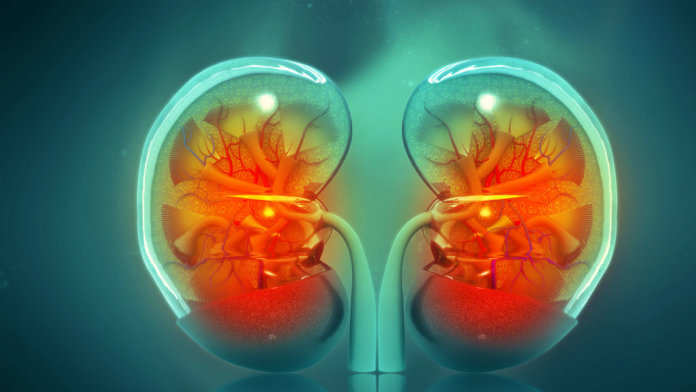10 percent of the global population suffers from some form of kidney disease. That includes 37 million people in the US, 100,000 of whom pass away each year awaiting a kidney transplant.
Our kidneys are crucial for keeping us alive and healthy. A sort of chemical computer that keeps our blood chemistry stable—whether we’re eating a sugary birthday cake or a vitamin-filled salad—they prevent waste buildup, stabilize our electrolyte levels, and produce hormones to regulate our blood pressure and make red blood cells.
Kidneys clean our blood using nephrons, which are essentially filters that let fluid and waste products through while blocking blood cells, proteins, and minerals. The latter get reintegrated into the blood, and the former leave the body in urine.
Scientists have struggled to come up with viable treatments for kidney disease and renal failure, and their complexity means kidneys are incredibly hard to synthetically recreate; each kidney contains around one million intricately-structured nephrons.
But new progress from chemical engineering researchers at the University of Arkansas has brought functioning artificial kidneys one step closer. The researchers created a device that was able to filter blood in a way similar to biological nephrons. They described the device in a recent paper published in Nature Communications Materials.
There are two basic processes that take place when blood passes through the kidneys. First, clusters of blood vessels called glomeruli let small molecules, waste, and water through, while proteins and blood cells stay behind. The material that gets through this first filter then flows into the nephron network, where it’s further filtered in a process called ion transport.
The researchers’ work focused on the second step, ion transport. They placed a porous mesh made of platinum between two ion-exchange wafers to create a wafer that pushes ions through membranes using an electric field. The platinum meshes serve as electrodes when voltage is applied, enabling the team to select different ions and adjust their transport rates independently. They tested the technology with various ions and were successfully able to mimic the ion transport done by the kidneys.
In their paper, the team points out that other research groups have tried creating artificial nephrons using living, cell-based systems, including stem cells; but outside a native, living environment and absent the physical and hormonal signaling that control their function, biologically-based systems have struggled to replicate the nephrons’ function, especially ion transport.
Christa Hestekin, Arkansas associate professor of chemical engineering and the lead author of the paper, said, “The system could work as a stand-alone device or in conjunction with peritoneal dialysis to control the chemistry of solutions used in treatment. And, minor modifications to the device could enable it to function as a wearable and potentially implantable artificial kidney.”
In the US alone, over 93,000 people are currently on the waiting list for a kidney transplant. Though a fully-functioning artificial kidney is likely still years away at best, scientists are making incremental progress in recreating this vital organ; an artificial nephron like the one described here is just one piece of a complex puzzle.
Another crucial piece is a functioning network of blood vessels. In 2015, scientists at Lawrence Livermore National Laboratory created bioprinted kidney tissue that replicated some of the functions of biological nephrons. In 2016 a group at Harvard’s Lewis Lab used 3D printing to re-create the nephrons’ tubules, complete with a vascular network for blood flow—but they only stayed alive for a little over two months.
The fully synthetic nature of the Arkansas team’s technology could thus have a leg up on biologically-based approaches. According to Hestekin, the nephron could be combined with ultrafiltration, nanofiltration, or reverse osmosis systems and integrated into an artificial kidney.
Given the vast number of people in need of them, artificial kidneys can’t come soon enough, and will be a miracle of modern science when they do arrive. Though it’ll be some time yet, incremental progress like this gives us the confidence to say “when” instead of “if.”
Image Credit: crystal light / Shutterstock.com



